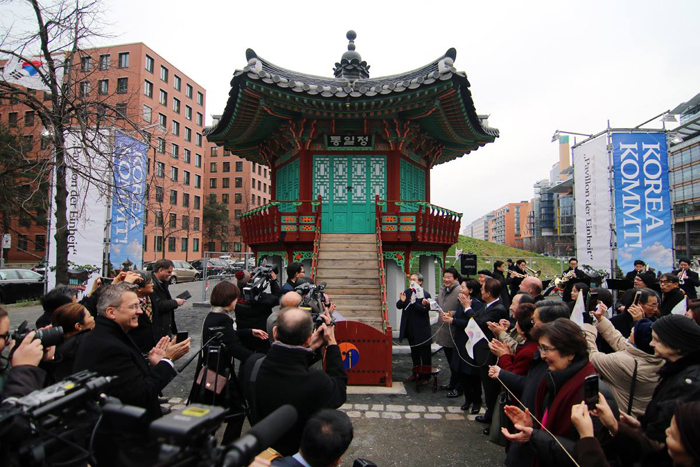
The Tongiljeong Pavilion, a traditional Korean stone and wood gazebo, welcomes people to Potsdam Square in Berlin with its opening ceremony on Nov. 25. The pavilion was set up to embody the hopes of the Korean people and of the entire world that Korea, too, will achieve reunification, just as Germany did.
The year 2015 marks the 25th anniversary of the beginning of the official demolition of the Berlin Wall and also the 70th anniversary of the end of World War Ⅱ.
Potsdam Square, a public square emblematic of the Cold War and of the reunification between East and West Germany, has seen the construction of a traditional Korean pavilion completed on Nov. 25.
The Unification Pavilion, or Tongiljeong Pavilion (통일정), now welcomes Berliners to their central plaza, giving them a wide view in every direction. Shored up by stone pillars and constructed of pine, all the materials were flown in from Korea. The building allows visitors to have a small chat and to grab a bite to eat as they sit on the floor inside.
The pavilion was built in the hopes that the world would work as one to help the two Koreas achieve reunification, as Germany began to do just over 25 years ago, since Korea has been divided for more than 70 years.
A ceremony to mark the pavilion's completion was attended by about 200 people, including German Congressman Hartmut Koschyk, representatives from the Korean Cultural Center in Germany and citizens from both countries.
The pavilion is 3 meters in diameter and 8 meters high. It was modeled after the hexagonal Sangryangjeong Pavilion at Changdeokgung Palace, one of Seoul's Joseon-era palaces.
The Korean Cultural Center in Germany mapped the blue print for the pavilion in September 2012 and received approval from the city in September 2014. The Hwacheon Hanok School in Hwacheon-gun County, Gangwon-do Province, took the helm of the project in June this year. Six experts from the school flew to Berlin in October to begin construction of the pavilion's foundation and columns. The team also started on the traditional art that decorates wooden buildings and eaves, dancheong, and the traditional tiled roof, the giwa.
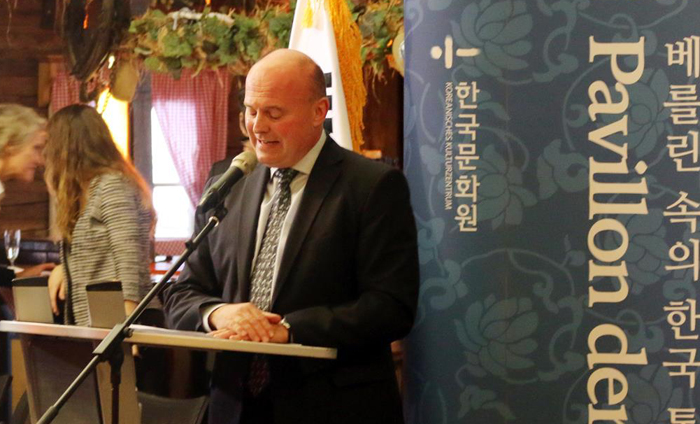
German Congressman Hartmut Koschyk gives a congratulatory speech during a ceremony to mark the pavilion's completion on Nov. 25.
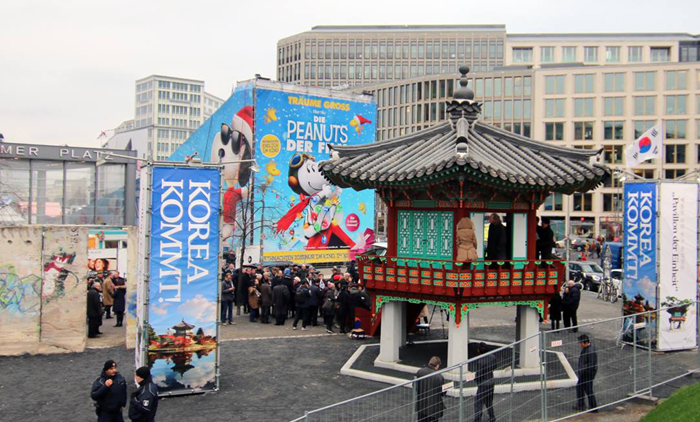
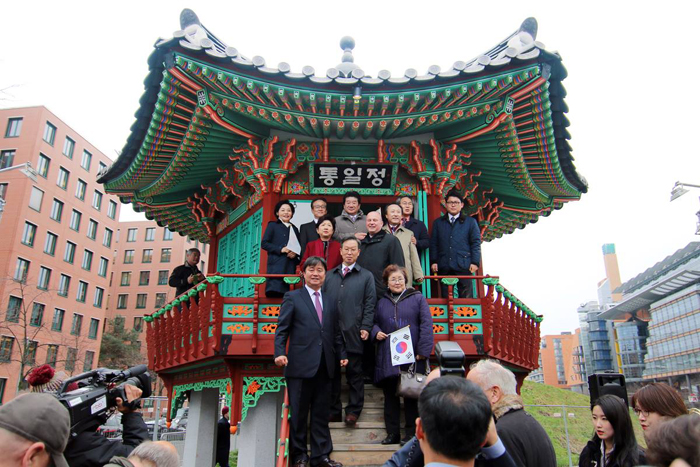
Visitors pose for a commemorative photo at the Tongiljeong Pavilion in Potsdam Square in Berlin on Nov. 25.
According to the Korean Cultural Center in Germany, the stone gazebo will help people in the city get a better understanding of Korean traditions, as it will host numerous events, such as calligraphy classes and traditional food and tea samplings. The pavilion will also serve as a venue where people will be able to witness first-hand the desire of the nation and of the people of Korea to be reunited as one.
Park Younggoog, director of the Korean Culture and Information Service (KOCIS), said, “Just as the 43-kilometer Berlin Wall that divided the city in two for many years collapsed in the end, so, too, people from all around the world hope that the barbed wire fences separating the two Koreas for 250 kilometers across the peninsula will soon be cut down.”
By Wi Tack-whan, Sohn JiAe
Korea.net Staff Writers
Photos: The Korean Cultural Center in Germany
whan23@korea.kr
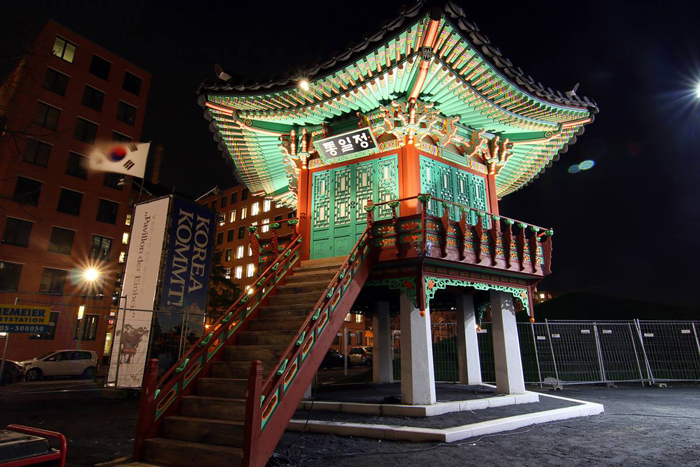
The Tongiljeong Pavilion in Potsdam Square is lit up at night.